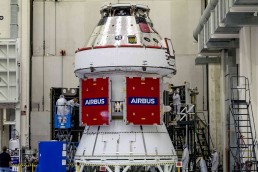February 2, 2021
Fly Me to the Moon: Airbus Wins ESA Contract for Three More European Service Modules for NASA’s Orion Spacecraft

February 2, 2021
Fly Me to the Moon: Airbus Wins ESA Contract for Three More European Service Modules for NASA’s Orion Spacecraft
